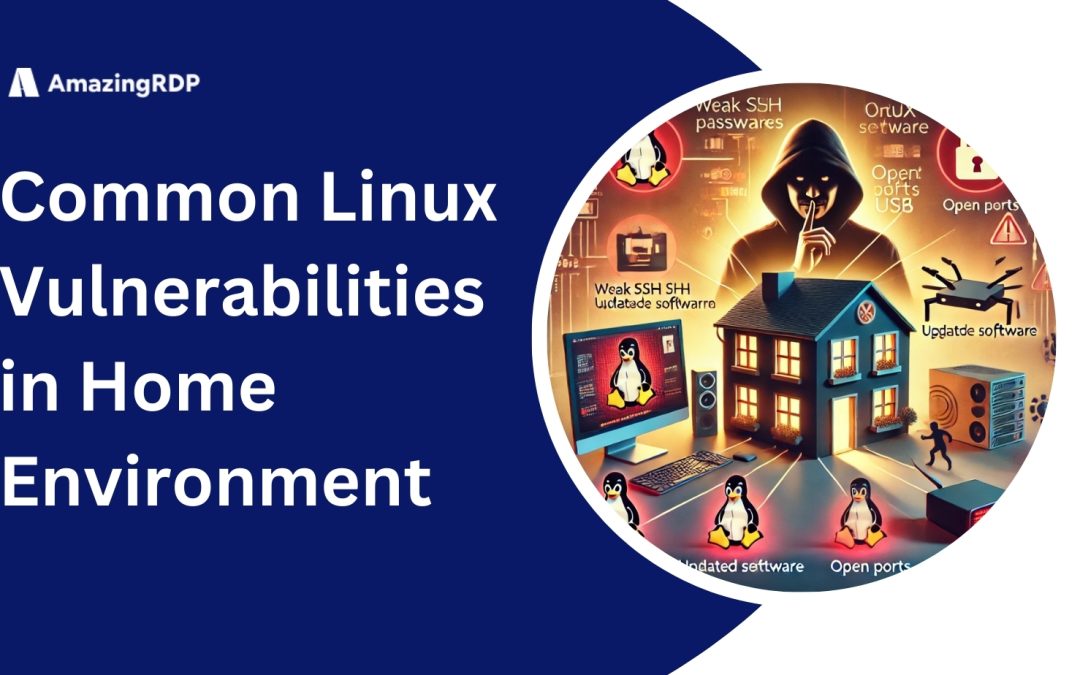Linux Vulnerabilities in Home environment.
Throughout the first two decades of this century, the Linux operating system has achieved a level of ubiquity comparable to that of Windows.

While only a mere 3% of individuals utilize it on their laptops and PCs, Linux reigns supreme in the realm of the Internet of Things and stands as the most widely used server OS. It’s highly probable that you possess at least one Linux device in your household – your trusty Wi-Fi router.
However, it’s quite likely that there are actually numerous others lurking about: Linux is frequently employed in smart doorbells, security cameras, baby monitors, network-attached storage (NAS), televisions, and the list goes on.
Simultaneously, Linux has long enjoyed a reputation as a “trouble-free” operating system that necessitates no special upkeep and garners no interest from hackers. Regrettably, neither of these notions holds true for Linux any longer. So, what are the perils faced by Linux devices in our homes? Let’s delve into three practical examples.
Spying on desktops
Attackers recently compromised the Free Download Manager (FDM) website for Linux users, injecting a script that redirected some visitors to the official version while others landed on a malicious repository.
The trojanized FDM version, downloaded by unsuspecting users, then deployed malware, compromising sensitive information such as passwords.
This tactic mirrors previous incidents, like the compromise of Linux Mint images.
Regularly discovering vulnerabilities in Linux and popular Linux applications, as indicated by this list specifically for the Linux kernel, emphasizes the importance of recognizing that even well-configured OS tools and access roles do not offer comprehensive protection against these attacks.
In essence, it is no longer advisable to depend on common beliefs such as “Linux is less popular and not targeted,” “I don’t visit suspicious websites,” or “just don’t work as a root user.” The protection for Linux-based workstations should match the thoroughness required for Windows and MacOS.
NAS ransomware
Cyberattacks increasingly target home file servers and NAS devices, posing a significant threat due to the sensitive data they often contain.
Users storing important backups on these devices face devastating consequences if their data gets encrypted and held for ransom.
The rise in these attacks is attributed to the growing popularity and affordability of NAS devices, expanding the pool of potential targets for hackers.
To enhance protection, users should secure home networks and devices by using strong passwords, keeping software updated, and regularly backing up data externally.
Additionally, employing antivirus software and enabling two-factor authentication whenever possible is recommended.
In the ever-evolving landscape of cyberattacks, individuals and businesses must stay vigilant and proactively safeguard their data and networks.
Router botnet
Attackers leverage malware on routers, security cameras, or other always-on, internet-connected devices to exploit them for various cyberattacks. The prevalence of such bots is evident in DDoS attacks, with the Mirai botnet serving as a prominent example, orchestrating the largest DDoS attacks in the past decade.
Infected routers also find use as proxy servers, allowing criminals to access the internet using the victim’s IP address, effectively concealing their activities.
Given the persistent demand for these services in the cybercrime realm, botnet operators actively resell them to other cybercriminals.
Securing Linux Systems at Home
Strengthen the security of your router,
NAS, baby monitor, and home computers by setting unique and robust administrator passwords.
Guard against popular methods like brute force attacks and attempts with default factory passwords.
Consider using a password manager to store strong (long and complex) passwords, eliminating the need for manual entry each time.
Update the firmware of your router, NAS, and other devices regularly.
Set unique strong passwords for router, NAS, and computers. Use a password manager. Check for automatic updates to protect against common Linux vulnerabilities.
Disable Web access to the control panel
Restrict access to your router and NAS control panel. Ensure they’re only accessible from your home network, not the internet.
Minimize unnecessary services
NAS, routers, and smart doorbells are mini servers with features like media hosting.
Enable only necessary functions.
Consider limiting cloud functionality
Disable cloud functions on your NAS (e.g., WD My Cloud) if unused. Access it only through your local home network for security. Not only will this prevent many cyberattacks, but it will also safeguard you against incidents on the manufacturer’s side.
Use specialized security tools.
Depending on the device, the names and functions of available tools may vary. For Linux PCs and laptops, as well as some NAS devices, antivirus solutions are available, including regularly updated open-source options like ClamAV. There are also tools for more specific tasks, such as rootkit detection.
For desktop computers, consider switching to the Qubes operating system.
It’s built entirely on the principles of containerization, allowing you to completely isolate applications from each other. Qubes containers are based on Fedora and Debian.

For those looking to enhance security and performance without the hassle, AmazingRDP offers reliable and secure Linux VPS solutions. With managed services, advanced security features, and 24/7 support, AmazingRDP ensures that your systems remain protected and optimized, allowing you to focus on what matters most.
Stay ahead of potential threats—partner with AmazingRDP and keep your Linux environment secure and trouble-free.
Explore more , 6 Ideal File Transfer Protocol Clients in Windows, Mac, Linux
For More updates follow us on Meta , X, Instagram .
READ OUR BLOGS.
